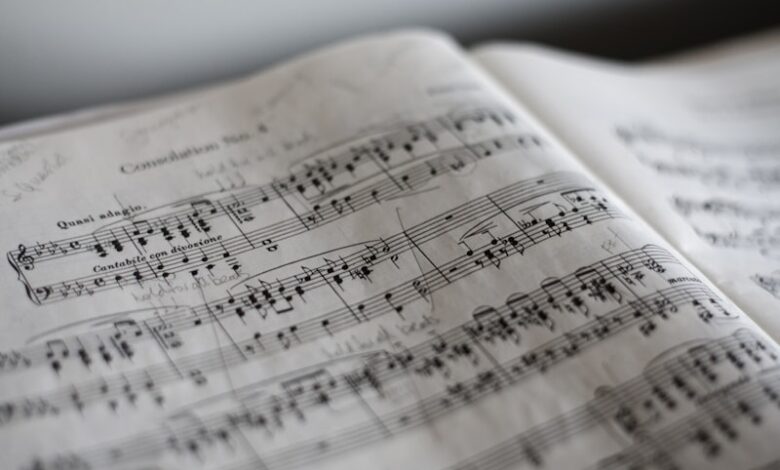The Charismatic Charango: Andean Folk Music’s Tiny Giant

Have you ever heard the captivating sound of the charango? This unique and enchanting instrument holds a special place in the heart of Andean folk music. Despite its small size, the charango packs a powerful punch, both in terms of its rich cultural heritage and its distinctive sound.
The charango is a stringed instrument that originated in the Andean region of South America, particularly in countries like Bolivia, Peru, and Argentina. Its compact size and melodic resonance make it a truly remarkable instrument. Often referred to as the “tiny giant” of Andean folk music, the charango has found its way into the hearts of musicians and music lovers around the world.
Crafted with expertise and precision, the charango possesses a unique construction. Traditionally made from the shell of an armadillo, it showcases the resourcefulness of indigenous communities. Nowadays, charangos are also crafted using wood or synthetic materials, but the allure of the traditional armadillo shell charango remains unmatched.
When played, the charango emits a sound that is both vibrant and soul-stirring, evoking images of vast mountain landscapes and ancient traditions. Its high-pitched tones and intricate strumming patterns create a mesmerizing melody that instantly transports listeners to the heart of Andean culture.
In Andean folk music, the charango plays a central role, often taking the lead in ensemble performances. Its energetic and rhythmic character infuses the music with vitality, bringing life to traditional songs and dances. Whether it’s accompanying lively festivities or heartfelt ballads, the charango’s presence is felt throughout Andean musical traditions.
Beyond its cultural significance, the charango has gained popularity worldwide due to its versatility. Musicians from various genres, including world music, pop, and even rock, have incorporated the charango into their compositions, adding a touch of Andean flair to their soundscapes. This humble instrument has transcended boundaries and continues to captivate audiences with its unique charm.
The charango stands tall as a charismatic figure in the realm of Andean folk music. Despite its diminutive size, it possesses immense cultural and musical significance. Its distinct sound resonates with listeners, transporting them to the vibrant landscapes and traditions of the Andean region. Whether you’re an avid music enthusiast or simply curious about world music, the tiny giant that is the charango will leave you awestruck with its enchanting melodies.
Unveiling the Enigmatic Charango: Exploring the Secrets of Andean Folk Music’s Iconic Instrument
Have you ever heard of the charango? This fascinating instrument, deeply woven into the fabric of Andean folk music, holds a mystical allure that captivates both musicians and listeners alike. In this article, we will delve into the enigmatic world of the charango, unearthing its secrets and shedding light on its significance in Andean culture.
The charango is a small stringed instrument originating from the Andean regions of South America. Resembling a miniature guitar, it boasts a rich history dating back centuries. Crafted with expertise and precision, the charango embodies the spirit of Andean heritage, telling stories through its haunting melodies.
What sets the charango apart is its unique construction. Traditionally made from the shell of an armadillo, it evokes a sense of wonder and intrigue. The instrument’s resonant body, combined with nylon or gut strings, produces a distinct sound that resonates deep within the soul. Its compact size also allows for intricate fingerpicking, enabling musicians to create intricate melodies that reflect the vibrant Andean landscapes.
Beyond its captivating appearance, the charango plays a pivotal role in Andean folk music. It serves as a conduit for expressing the region’s traditions, beliefs, and struggles. With each pluck of the strings, the charango weaves tales of ancestral wisdom, conveying the resilience and beauty of Andean culture.


In addition to its cultural significance, the charango has gained recognition worldwide for its unique sound. Musicians and composers across genres have incorporated its distinctive tones into their compositions, infusing global music with a touch of Andean spirit. From traditional folk tunes to contemporary fusion, the charango adds a layer of authenticity and depth to any musical piece it graces.
As we explore the depths of Andean folk music, we cannot overlook the role of the charango. This enigmatic instrument embodies the essence of an entire culture, bridging the gap between past and present. Its melodic reverberations carry stories of triumph, love, and nostalgia, echoing through generations and enchanting audiences around the globe.
From the Streets to the World Stage: The Charango’s Journey as a Global Musical Phenomenon
In the vast tapestry of world music, the charango stands as a vibrant thread that weaves together melodies from the streets to the grandest stages across the globe. This diminutive instrument, originating from the Andean regions of South America, has captivated audiences with its unique sound and fascinating journey.
Imagine a small guitar-like instrument, barely larger than a ukulele, yet possessing a striking presence that commands attention. That is the charango—a testament to the extraordinary artistry and musical heritage of its birthplace. Its origins can be traced back to the indigenous culture of the Andes, where it played an integral role in traditional folk music.
The charango’s story is one of adaptation and evolution. From humble beginnings as an instrument crafted from armadillo shells and wood, it has grown to encompass a wide range of materials and styles. Today, modern charangos are crafted using various woods, such as spruce or cedar, and feature intricate designs and colorful decoration.
What sets the charango apart is its rich, resonant tone, which combines elements of a guitar and a mandolin. Its distinct sound transports listeners to the panoramic landscapes of the Andean mountains, evoking emotions of joy, melancholy, and a profound connection to nature. It’s no wonder that this enchanting instrument has captured the hearts of musicians and audiences worldwide.
Beyond its cultural roots, the charango has transcended borders and found its place on the global stage. Musicians from diverse genres have embraced its unique timbre, incorporating it into their compositions and performances. From folk to world music, from intimate acoustic ensembles to symphony orchestras, the charango’s versatility knows no bounds.
As the charango continues to resonate across continents, it serves as a testament to the power of music to bridge cultures and foster understanding. Its journey from the streets of the Andes to the world stage reflects the universal language of melody and rhythm, reminding us that music has the incredible ability to transcend differences and unite humanity.
In conclusion,
The charango’s evolution from its humble beginnings to becoming a global musical phenomenon is an awe-inspiring testament to the instrument’s enduring charm and versatility. From the Andean villages it called home to concert halls around the world, the charango has captivated audiences with its soul-stirring melodies. As we listen to its enchanting sounds, let us celebrate the immense power of music to connect us all, regardless of our backgrounds or borders.
The Charismatic Charango: How this Tiny Stringed Instrument Captivates Audiences Worldwide

Have you ever heard of the charango? If not, get ready to be amazed by this charismatic little instrument that has been capturing audiences worldwide. The charango is a small stringed instrument native to the Andean region of South America. Despite its modest size, it holds an extraordinary power to captivate listeners with its unique sound and compelling history.

Imagine a guitar, but shrunk down to a miniaturized version. That’s precisely what the charango looks like—a diminutive guitar with a big personality. Its enchanting tones resonate effortlessly, filling the air with a vibrant melodic charm. When played skillfully, the charango can evoke a wide range of emotions, from joy and excitement to melancholy and nostalgia.
What makes the charango truly fascinating is its rich cultural heritage. Originating in the 18th century, this instrument has deep roots in the traditional music of the Andean communities. It became an integral part of their folklore, accompanying dances, storytelling, and celebrations. The charango’s versatility allowed it to adapt and thrive across different musical genres, blending seamlessly with contemporary styles while retaining its distinctive essence.
Despite its regional origins, the charango’s allure knows no boundaries. With the advent of globalization and increased cultural exchange, this tiny instrument has made its way into the hearts of musicians and enthusiasts worldwide. Its unique sound has found resonance in various genres, ranging from folk and world music to even rock and pop. Artists around the globe have embraced the charango, infusing their compositions with its charismatic presence.
Beyond its musical abilities, the charango symbolizes resilience and cultural identity. It serves as a reminder of the rich traditions and stories passed down through generations. By embracing the charango, musicians not only honor the past but also contribute to its continued evolution, ensuring that this captivating instrument remains alive and cherished.
The charango’s charm lies in its ability to captivate audiences worldwide. Despite its small size, this instrument’s melodic allure and rich cultural heritage have made it a beloved presence in musical compositions around the globe. So next time you come across the charismatic charango, let its enchanting sound transport you to the captivating world of Andean music and beyond.
Preserving Cultural Heritage: Reviving Andean Folk Music through the Timeless Charango

Have you ever wondered how ancient traditions and cultural heritage can be kept alive in today’s fast-paced world? The answer lies in the revival of Andean folk music, a precious gem that encapsulates the rich history and spirit of the Andean people. At the heart of this revitalization is the timeless charango, an instrument that carries the soul of the Andes.
The charango, a small stringed instrument resembling a guitar, has been an integral part of Andean culture for centuries. Its distinct sound resonates with the unique rhythms and melodies of the region, evoking a sense of nostalgia and connecting generations. However, as modernity took hold, the charango faced the risk of fading into obscurity, threatening to silence the echoes of the past.
But there is hope. A new wave of musicians, deeply passionate about preserving their cultural heritage, has emerged, breathing life back into Andean folk music. They recognize the charango as a powerful tool for revival, capable of bridging the gap between the old and the new, and captivating audiences across the globe.
By embracing the charango, these modern-day troubadours are not only reviving a musical tradition but also igniting a sense of pride and identity within their communities. The enchanting melodies produced by this humble instrument evoke images of majestic mountains, vibrant festivals, and ancestral wisdom. Through its strings, the charango speaks a language that transcends borders, reminding us of the universality of human emotions.
Moreover, the revival of Andean folk music goes beyond the preservation of sounds; it serves as a catalyst for cultural exchange and understanding. As the charango finds its place on global stages, it brings people from different backgrounds together, fostering appreciation and respect for diverse cultural expressions. It allows us to glimpse into the heart and soul of the Andean people, nurturing curiosity and empathy.
The revival of Andean folk music through the timeless charango is a testament to the strength of cultural heritage. It breathes new life into ancient traditions, captivating audiences with its mesmerizing melodies. Through the efforts of dedicated musicians, this cultural renaissance transcends borders, fostering unity and understanding. The charango becomes a bridge between past and present, ensuring that the vibrant spirit of the Andes continues to resonate for generations to come.




